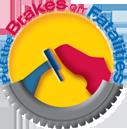By Debbie Hersman
Zero deaths on our highways is an ambitious — but not unachievable — goal shared by federal and state agencies, transportation organizations and professionals and safety advocates. How do we reach this goal? Start with one day without traffic deaths. On October 1, 2001, the first annual Put the Brakes on Fatalities Day was held. Today, we join with many others and recommit to taking action to achieve our goal.
In 2010, a 15-passenger van carrying a family of 12 was struck by a truck-tractor semitrailer traveling in the wrong direction near Munfordville, Ky. Ten family members, eight of whom were not wearing seat belts, were killed; the two children who were using child restraints survived the crash with minor injuries. In 2010, the 19-year-old driver of a pick-up truck was killed when he ran into the back of a tractor-trailer truck that had stopped. The teen was texting before the crash. In 2011, an impaired driver with a BAC of 0.25 traveling in the wrong direction near Fountain, Colo., killed himself and two others when he collided head-on with their vehicle. What do all of these tragedies have in common? They all were preventable. Most drivers do not spend a lot of time thinking about decisions they make behind the wheel, but the reality is that the decisions made by individuals involved in these crashes contributed to their deaths and the deaths of others.
For decades, the NTSB and many others have promoted stronger laws and enhanced enforcement of those laws to reduce teen driver crashes, eliminate impaired and distracted driving and increase occupant restraint and motorcycle helmet use. Yet, decades later, we still see more than 32,000 lives lost on our roadways. One-third of those deaths involve an impaired driver — someone who made the decision to get behind the wheel and drive impaired. Even more startling, 52 percent of those killed weren’t wearing a seat belt. In the event of a crash, seat belts, child restraints and motorcycle helmets save lives. In 2011, had all passenger-vehicle occupants over 5 years of age had chosen to buckle up, almost 4,000 more lives could have been saved. If all motorcyclists had worn helmets, an additional 700 lives could have been saved.
Each of us has important decisions to make when we get in a car or on a motorcycle. Join me today in committing to achieving our goal of ZERO deaths on our nation’s roadways by making the right decisions.



